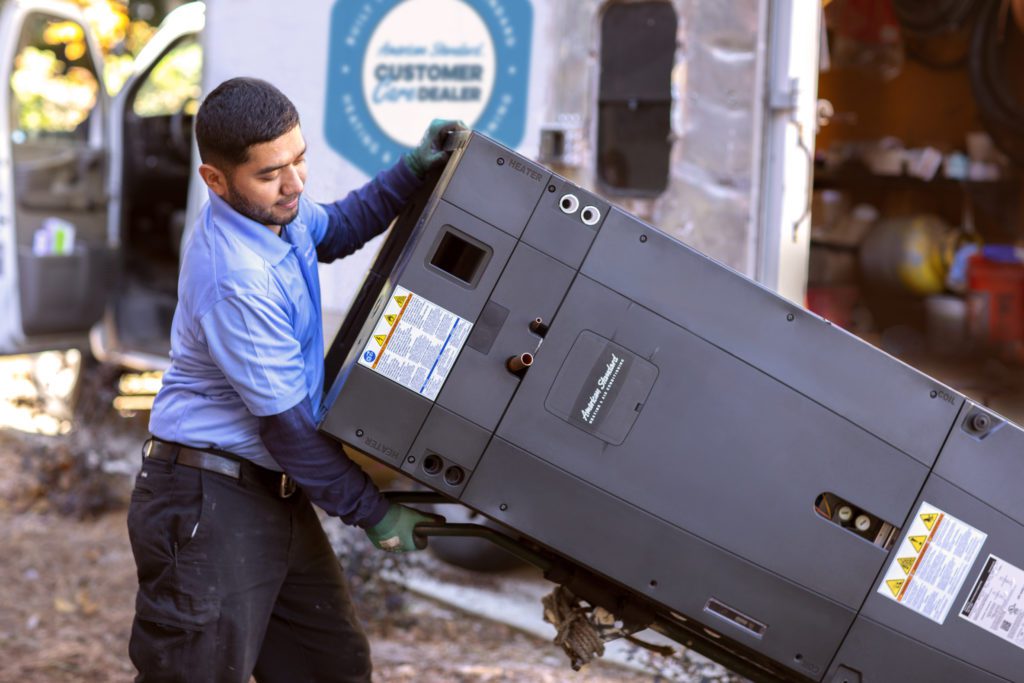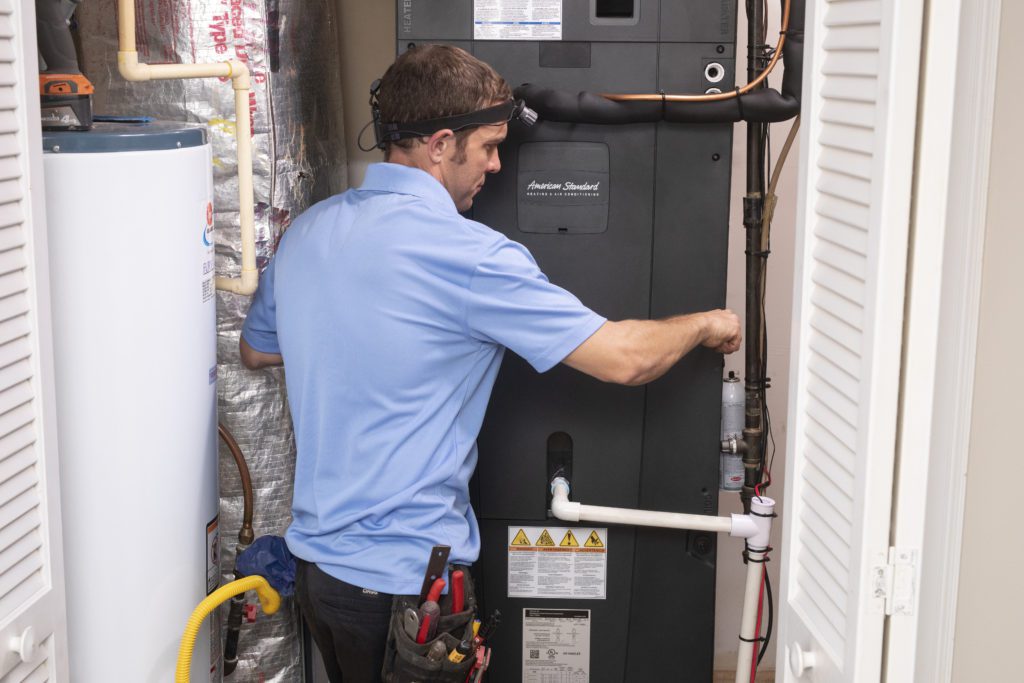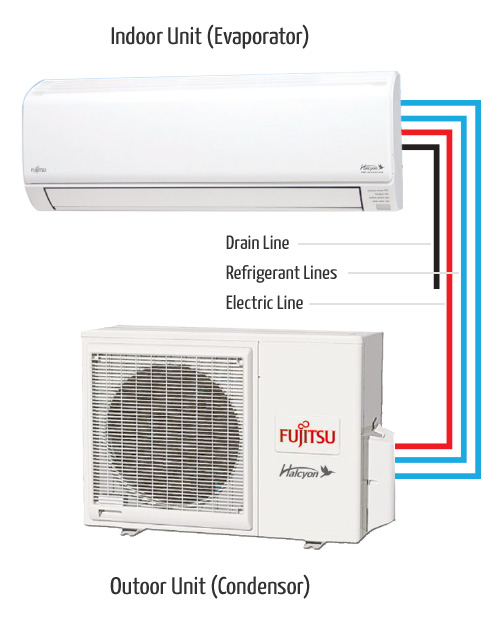
We can all agree that fossil fuels aren’t good for us or our environment. Reducing our carbon footprint is something we should all be striving toward. SMUD has a noble initiative to become carbon free by 2030 and part of their pathway is offering very hefty incentives to convert natural gas and propane appliances to all-electric versions. In fact, some cities have already started prohibiting gas appliances in new constructions homes.
Heat Pump heating technology is not new, however it is one of those things that have been dramatically improved over the decades. Here is some information to help you decide if it is the best HVAC option for you.
How Heat Pumps work
Extracting heat from a source- in this case the outside air. That warmth is absorbed by the refrigerant and compressed, then redistributed into the house through the ducting system. Refrigerant is run through your system via copper lines then zips through a coil (like a radiator) and the central system’s fan inside the home pushes air across the coil to warm it where it then works its way through the ductwork and into the rooms. Similar to an air conditioner, but in reverse.
PROS of Heat Pumps
- Less dependency on fossil fuels. These systems use only electricity to heat your home.
- SMUD is customer owned vs PG&E shareholder owned. Historically less volatile rate changes.
- Can work great in combination with solar, however we’ll touch more on that…
- Doesn’t dry out the air as much. Gas heating is VERY drying, so if you are sensitive to the dryness of a traditional gas heater, this may help.
- Safer. Not a gas appliance so no gas, fire, or carbon monoxide risk.
- Runs more efficiently when sized, installed, and run by the homeowner properly.
- LOTS of incentives right now. Between the local utilities, state, and federal tax credits- there has never been a better time to convert your gas furnace to heat pump*.
CONS of Heat Pumps
- Work differently and there is a learning curve. You need to run the system more constantly (but it is much more efficient!) We recommend no more than a 5° swing from the coldest thermostat setting to where you want it set when you are home.
- Cooler air created (but still warm!) Typically the air coming out of a gas furnace is around 120° where a heat pump produces 95° air. We as humans are 98° so if you put your hand up to the vent of a heat pump it will seem cooler, but there is heat contained in the air.
- Start to diminish in efficiency at about 40° outdoor temperature. Remember where I said it is using the outside air to help pre-heat the refrigerant? Just like in the summer when the hotter it gets outside the harder it is for the system to perform at peak efficiency.
- Potential infrastructure issues with more homes and cars being electrified? How much demand over supply do we have now? This is a question for our utilities and government to address.
- Non-heating days during cold snaps like we see no-cooling days during heatwaves? “It’s too cold, you can’t run your heater!” We don’t know for certain.
- Outdoor unit runs both heating and cooling so location is key. However, the existing location can be moved in most homes, heat pump or not!
- Additional electrical circuit will be needed. This typically isn’t a problem but some homeowners may not have room on the panel or a way to run additional wiring for the system. A panel upgrade may be necessary in the worst circumstances.
Using Solar to Save Money
Have solar? One thing you may not know:
“I have solar, this is great, I’ll get all my heat for free!” First and foremost, awesome for having solar on your home! However, everything is based on solar hours when it comes to how much solar energy is collected to be able to energize your home. What does this mean? In the winter- the sun is lower in the sky, weather determines how much the sun is out, and the days are much shorter. This means that the panels can’t collect as much energy as they do in the summer. Also, you have more lighting needs in the winter because of the shorter and darker days. While new heat pump systems are much more efficient than in years past, they still consume electricity so there is a very high likelihood that you’ll run out of ‘free’ solar power based on the load necessary to light and heat your home.


Another option to consider is a dual fuel, or hybrid, system. This is exactly as it sounds. It gives you the efficiency and comfort of the heat pump with the back-up heat source still being gas. The system is set to where it will run as a heat pump until it drops down to an outdoor temperature low enough where it would be more efficient to run on gas. The additional benefit is when the heat pump needs to go into a defrost cycle, the gas supplements to keep the air warm pushing through the home. The best of both worlds: ideal for those who are on the fence about going to a fully electrically heated home.
In addition to central forced air heat pumps, the worldwide choice is a ductless or mini-split heat pump system. Watch any home improvement or reality show based internationally and they only heat and cool with ductless. The most efficient way to heat and cool any home is to only heat and cool the rooms you are using. Makes sense, right? This is where a ductless system shines. Individual indoor remotes so you are only running the system in the rooms you are in.
Have a question we haven’t covered? Comments and questions are welcome via our Contact Form.
*Not all utilities are offering incentives. The State of CA has not yet announced their program. Please consult your trusted CPA about the Federal Tax Credit (tax liability matters, math is hard, you know the drill.)

